News Center
400-825-2586
A technique for isolation of Get exosomes is presented
Updatetime: 2021-12-03
A technique for isolation of Get exosomes is presented
Exosomes are small extracellular vesicles with diameters of 30-150 nm. Exosomes can be released by almost all cell types under physiological and pathological conditions and play important roles in cell communication and epigenetic regulation. Exosomes naturally exist in body fluids, including blood, saliva, urine and cerebrospinal fluid, and contain nucleic acids, proteins and other substances of their source cells. Therefore, disease diagnosis and treatment methods based on exosomes have been thoroughly studied. But getting pure exosomes has always been a challenge for the exosome institute, so researchers have also developed a number of methods for exosome isolation. Take a look.
Common methods for exosome isolation
01
Differential centrifugation
Multiple cycles of centrifugal force from 300×g to 100,000×g were performed to collect exosome particles.

02
Density gradient centrifugation
Iso-density gradient hypervelocity centrifugation is performed by progressively lowering the density stratification from bottom to top (A). The moving-zone gradient supercentrifugation method consists of two parts of gradient media, in which the sample is sequentially separated according to density/mass/size (B).

03
Ultrafiltration method
Schematic diagram of exosome separation by ultrafiltration. (A) Tandem microfilters through which exosomes are collected by extracellular fluid. (B) Sequential ultrafiltration, in which exosomes are collected by extracellular fluid sequentially through filters of different diameters.

04
Tangential flow filtration
In the tangential flow filtration process, the feed flow flows parallel to the membrane surface, and the applied pressure makes part of the water flow through the membrane according to the size of the filter to separate exosomes.
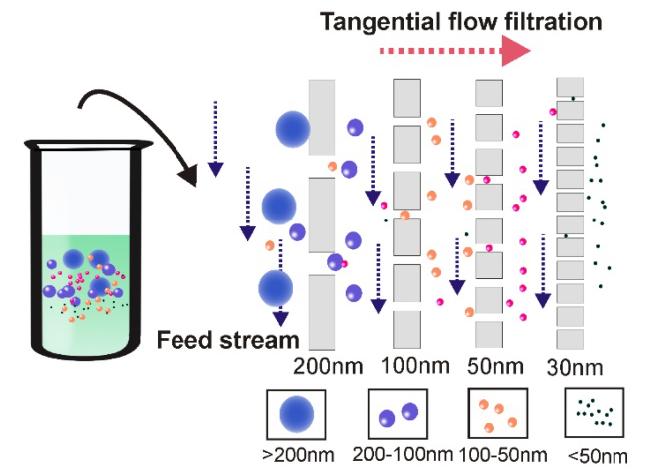
05
Dimension exclusion chromatography
Exosomes are separated by size exclusion chromatography, the solution is passed through the stationary phase, and the molecules are separated according to size.
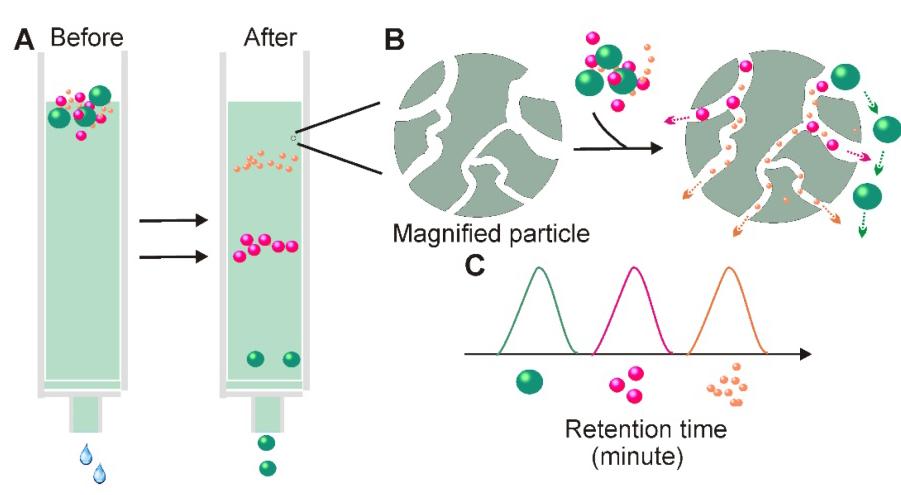
06
Polymer precipitation
Polymer precipitation The addition of a high hydrophilic polymer to a solution containing exosomes reduces the solubility of exosomes and induces their subsequent precipitation.
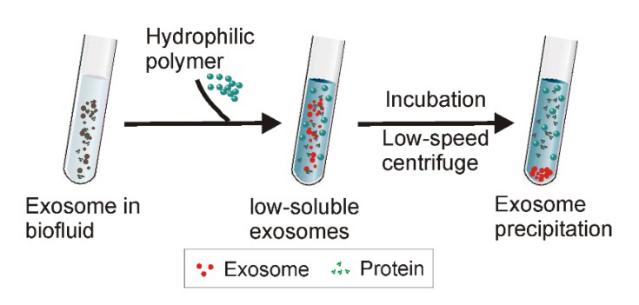
07
Immune affinity capture
Schematic diagram of exosome separation based on immune affinity. Antibodies that recognize exosome specific markers are incubated with exosome fluids to enrich exosomes, and exosomes are collected through additional elution steps.
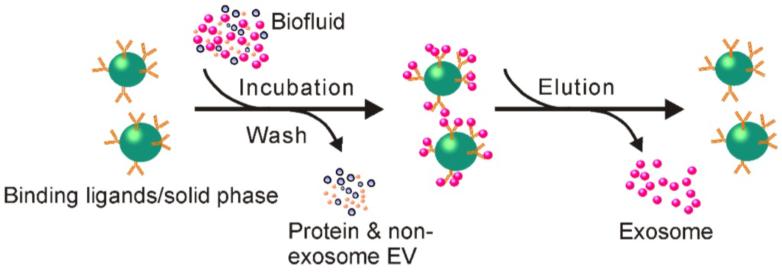
08
microfluidic
Integrated microfluidics technology combines exosome separation and analysis by adding exosome containing fluid to the medium and separating exosome based on the physical and biochemical properties of extracellular vesicles, enabling rapid isolation of exosomes from a small amount of body fluids and real-time exosome characterization analysis for in situ diagnosis.
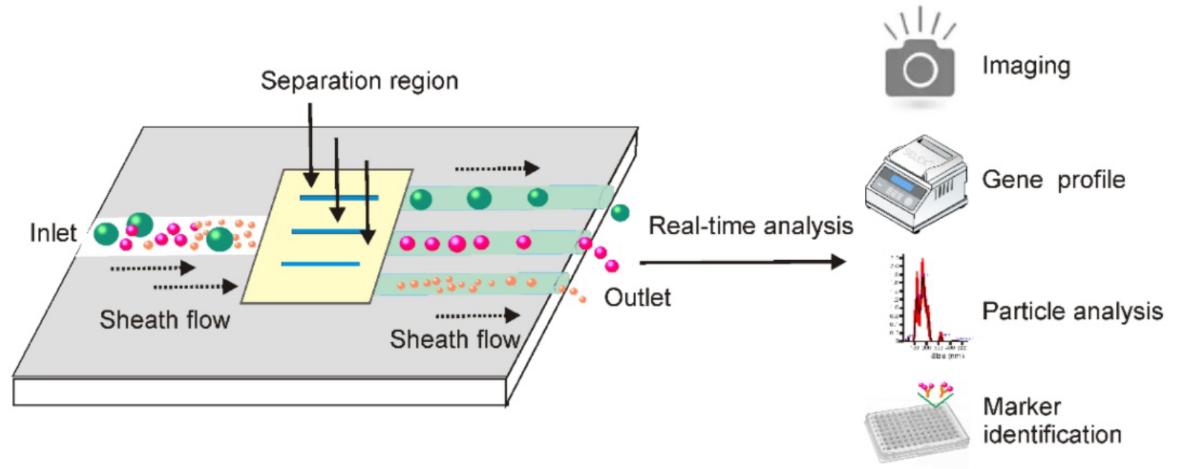
Comparison of exosome separation methods
01
Differential centrifugation
Advantages: low cost, low reagent contamination, suitable for mass preparation.
• Disadvantages: time-consuming and laborious, equipment requirements, easy to affect the purity of protein aggregation, not suitable for small samples.
02
Density gradient centrifugation
• Advantages: High purity, can separate exosome subgroups.
• Disadvantages: Equipment is demanding, time consuming and not suitable for small samples.
03
Ultrafiltration separation
• Advantages: low cost, fast speed.
• Disadvantages: General purity, shear stress may cause exosome damage, filtration membrane may cause exosome loss.
04
Dimension resistance separation
• Advantages: high purity, short time consuming, keep the natural state of exosomes, good repeatability, wide range of sample size, wide range of sample types.
• Disadvantages: High cost and additional exosome enrichment methods are required.
05
Polymer precipitation
• Advantages: simple operation, wide range of sample size, high efficiency.
• Disadvantages: Protein aggregation and contamination with other vesicles may affect subsequent analysis and quantification.
06
Immune affinity capture
• Advantages: Suitable for exosomes from specific sources, high purity, convenient, no reagent contamination.
• Disadvantages: high antibody cost, exosome labeling needs screening and optimization, low yield, elution may damage exosome structure.
07
Microfluidic technology
• Advantages: high efficiency and convenience, can realize automation and diagnosis.
• Disadvantages: only suitable for small sample separation.
DIB Biological Exosome Separation Kit provides a simple, fast and efficient method for the separation of exosome from blood, cell supernatant, cerebrospinal fluid, saliva, ascites, amniotic fluid and other samples in just four simple steps.
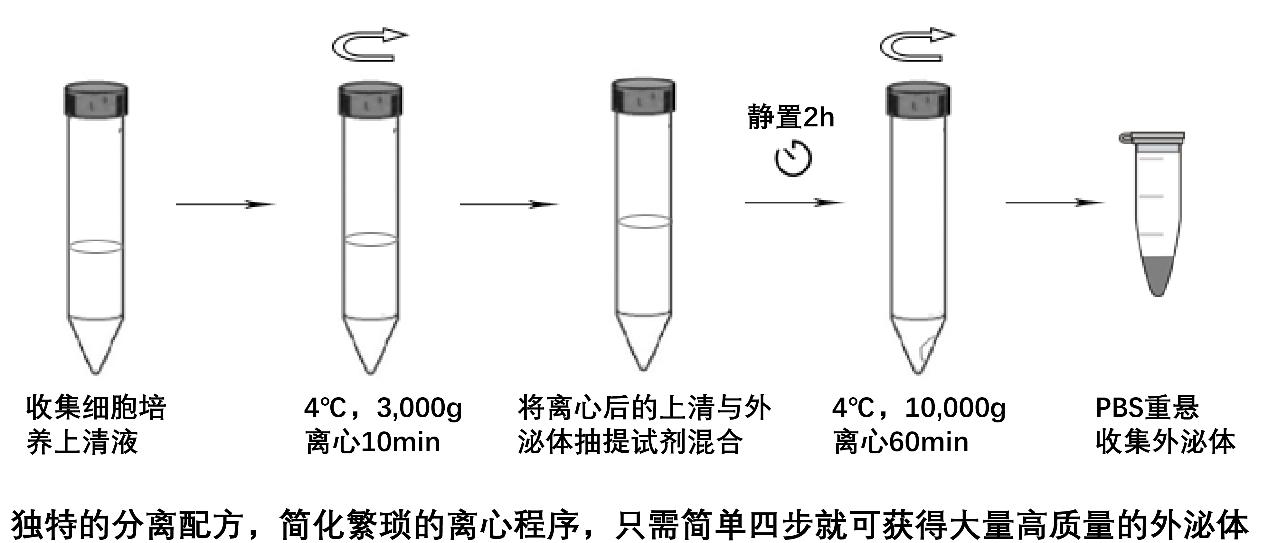
The separated products have been verified by electron microscope analysis, NTA particle size analysis and WB experiment, which can meet your downstream experimental requirements.
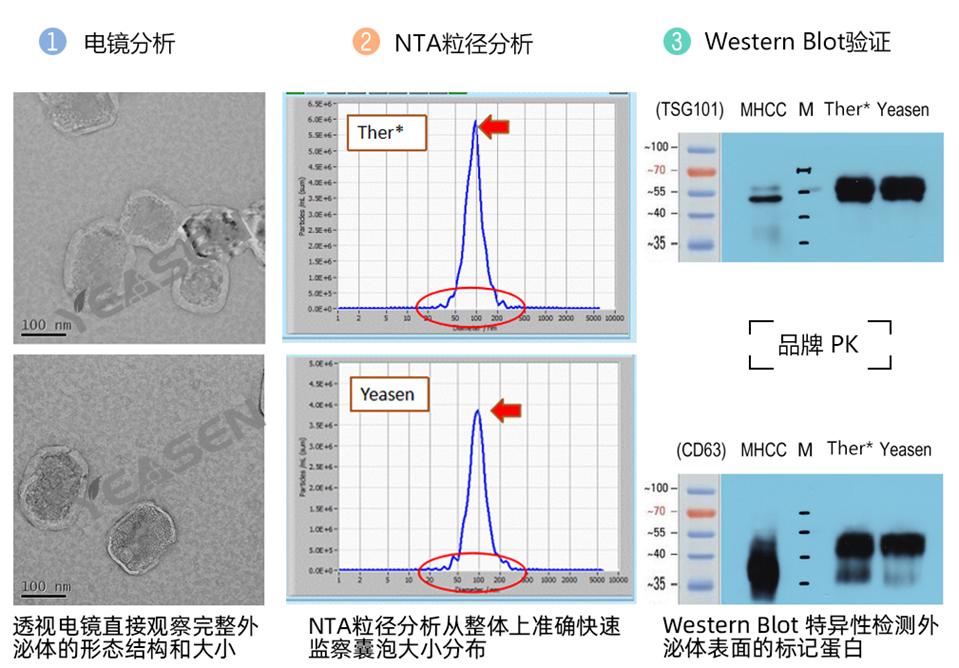
Product information
|
货号 |
名称 |
规格 |
|
41201ES25/50 |
25/50 mL |
|
|
41202ES30 |
30 mL |
|
|
41204ES10/30new |
10/30 T |
|
|
41203ES05 |
5 T |
|
|
52321ES05 |
2 mg |
reference
Yang D, Zhang W, Zhang H, Zhang F, Chen L, Ma L, Larcher LM, Chen S, Liu N, Zhao Q, Tran PHL, Chen C, Veedu RN, Wang T. Progress, opportunity, and perspective on exosome isolation - efforts for efficient exosome-based theranostics. Theranostics. 2020 Feb 19; Doi: 10.7150/ THno.41580. PMID: 32206116; 10(8):3684-3707. PMCID: PMC7069071.



